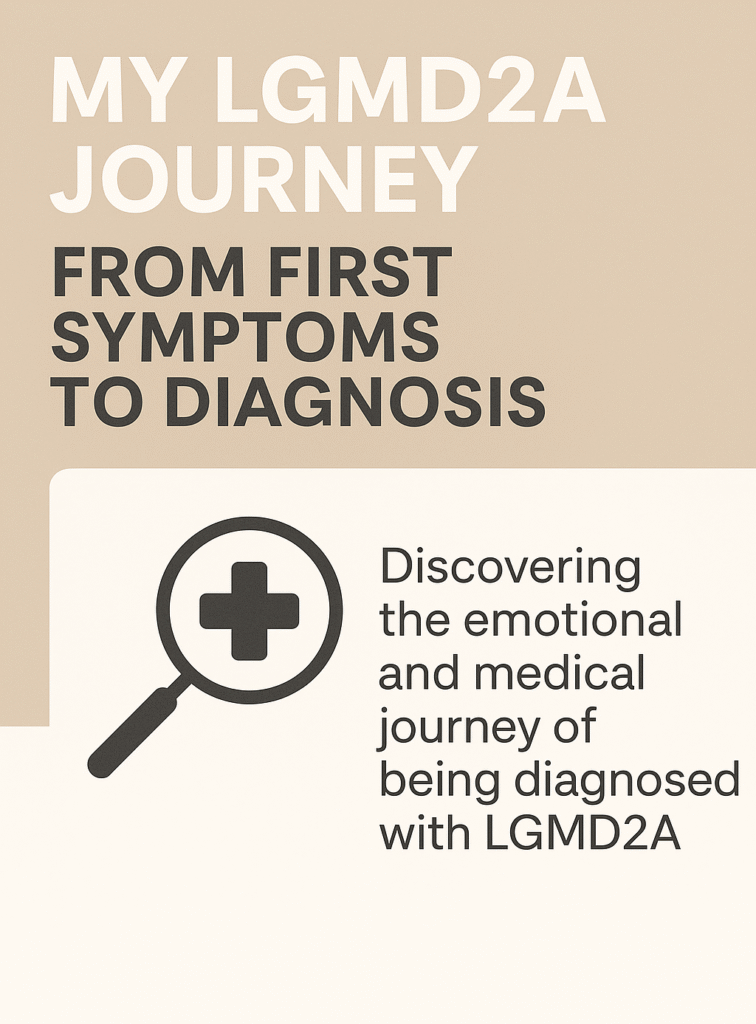
(Contributed by Anshuli Singhal – Software Engineer)
Life has a way of unfolding its mysteries slowly, sometimes giving us subtle signs before revealing the bigger picture. My journey with Limb Girdle Muscular Dystrophy (LGMD 2A) began long before I even knew what it was. Looking back, I can now connect the dots, realizing that the early symptoms were there all along.
The First Signs: Struggles with Cycling
During my school years, between Class 7th and 10th (around 15-17 years old), I started noticing difficulty while riding my bicycle. Pedaling required much more effort than it should have, and I often found myself pushing harder just to keep going. At the time, I brushed it off as a lack of stamina or fitness, never suspecting that it could be the first sign of a neuromuscular condition.
Difficulty with Stairs and Fatigue
By the time I reached Class 12th, climbing stairs became increasingly challenging. I would tire quickly and had to put in extra effort to lift my legs, often relying on the handrails for support. The fatigue seemed unusual, but again, I attributed it to general tiredness or maybe a deficiency of some kind.
Worsening Symptoms During College
When I started my engineering studies, the problem escalated. Each passing day made stair climbing harder, and I began noticing a significant difference in my strength compared to my peers. The simplest activities, which others performed effortlessly, started feeling like a battle for me.
Seeking Medical Advice: The First Misdiagnosis
Concerned about these difficulties, I consulted several doctors. Their initial diagnosis pointed to anemia or a nutritional deficiency. I was prescribed multivitamins and encouraged to improve my diet, focusing on nutritious foods. Additionally, doctors suggested regular leg massages to enhance muscle strength. However, despite following all these recommendations, my condition did not improve.
A Turning Point: Consulting a Neurologist
Some of my relatives suggested that I consult a neurologist for a more detailed evaluation. Taking their advice, I visited the most reputed neuro physician in my city. He immediately recommended a series of blood tests, including Creatine Phosphokinase (CPK) and Complete Blood Count (CBC).
When the results came back, my CPK levels were shockingly high—over 3000+, whereas the normal range is around 120. This abnormality indicated that something was seriously wrong, prompting the doctor to order further tests.
The Diagnosis: A Life-Changing Moment
The next step was an Electromyography (EMG) test, which measures muscle and nerve function to detect neuromuscular diseases. Following this, I was admitted to the hospital for three days for a more comprehensive evaluation. Doctors conducted multiple strength assessments and muscle charting to determine the extent of muscle weakness.
After thorough investigations, I was diagnosed with Limb Girdle Muscular Dystrophy (LGMD 2A), specifically Calpainopathy or Dysferlinopathy (LGMD 2B). The news was overwhelming. I had never heard of this condition before, and suddenly, I was facing a reality where my muscles would progressively weaken, and there was no cure—only ways to manage it.
A Family Revelation
To understand whether it was a genetic condition, my elder brother and younger sister were also tested. My brother showed no signs of the disease, but my sister, despite having no visible symptoms, had elevated CPK levels. Doctors identified early signs in her, such as scapular winging and enlarged calf muscles, confirming that she too had the condition.
For our family, this discovery was heartbreaking. The realization that there was no cure, only management through physiotherapy and a proper diet, was difficult to accept. However, we had no choice but to move forward and adapt to this new reality.
Confirming the Diagnosis: Muscle Biopsy
To further confirm the diagnosis, I underwent a muscle biopsy, a procedure where a small sample of muscle tissue was extracted and analyzed. The biopsy results reinforced the findings, confirming that I had LGMD 2A. This test provided conclusive evidence, putting an end to any remaining doubts and helping doctors guide my treatment plan.
Embracing Life Despite Challenges
Life often throws unexpected challenges our way. While the diagnosis of LGMD 2A was a shock, it also made me more resilient. I learned to adapt, focus on what I could do, and embrace the journey with a positive outlook. Every individual faces their own battles, and this is mine.
Despite the obstacles, life goes on, and I choose to live it to the fullest, cherishing every moment and overcoming hurdles one step at a time.
For any questions you can contact us
